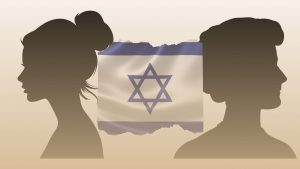Jews and the Civil War
Published January 4, 2012
At the outbreak of the Civil War in 1861, Jewish family loyalties mirrored what occurred throughout the United States where brother fought against brother. Jews also found themselves on opposite sides of the battlefield. Out of 150,000 Jews in the U.S. at the outbreak of war, estimates are that 3,000 fought on the side of the Confederacy and 6,700 for the Union. It is thought 600 Jews died in battle.
That there were Jews in the Confederacy was a fact largely forgotten until the publication in 2000 of the book, “The Jewish Confederates” by Robert Rosen. He meticulously documents how Jews participated in every aspect of the Confederacy from the battlefield to home life.
ADVERTISEMENT
“Frequently ethnic minorities enlisted as a unit on both sides, but that was not so for Jewish soldiers,” says Jack Powell, a Civil War historian in St. Louis. “The reason is that Jews were only one half a percent of the overall population, and they were not living in one concentrated area. As a result it was unusual for enough Jewish men to be able to form a solely Jewish unit. Most served alongside their Christian counterparts.”
Like most Americans, Jews were divided on the issue of slavery, according to the “Encyclopedia of the American Civil War.” Jews basically followed in the ways of their neighbors when it came to slavery.
However, the topic was vigorously argued for and against by Jewish scholars. Rabbi Jacob Raphall denied any biblical opposition to slavery in a highly publicized sermon called “The Bible View of Slavery.” Rabbi David Einhorn and others, concerned that Raphall’s highly publicized opinion would be construed as the official policy of American Judaism, strongly repudiated his position.
The Jewish experience in the Civil War included battlefield leadership, valuable administrative guidance, anti-Semitism, and a struggle to observe Passover.
Jews and the Union
ADVERTISEMENT
The Union Army boasted several Jewish generals, according to Herb Geduld, a Jewish historian. During the war, military promotion was through political influence or in recognition for heroic acts on the battlefield. Geduld’s research revealed the Jewish generals he discovered all attained the rank through battlefield bravery.
“Perhaps the most notable Jewish Union general was Frederick Salomon,” Powell says. “He started the war as a captain in the 5th Missouri Infantry, and was involved in the largest Civil War battle in Missouri at Wilson’s Creek in August, 1861. By June of 1962 he had been promoted to a brigadier general commanding troops fighting for control of Newtonia, Mo.
“The Salomons were quite a family,” Powell adds. “A cousin was also a Civil War General, and another was Governor of Wisconsin during the war.”
General Order No. 11
One of the most flagrant anti-Jewish decrees in U.S. history occurred during the Civil War on Dec. 17, 1862. General Ulysses S. Grant issued an order from his headquarters in Holly Springs, Miss., ordering all Jews out of the geographical area he commanded. Known as General Order No. 11, it read, in part as follows:
“The Jews, as a class violating every regulation of trade established by the Treasury Department and also department orders, are hereby expelled from the department within twenty-four hours from the receipt of this order.”
Several historical accounts indicate Grant was attempting to expel a group of illegal speculators from the area who were trying to take advantage of his soldiers, and that he chose to target the local Jews as the cause of all the activity.
When President Abraham Lincoln became aware of the order he declared: “I do not like to hear a class or nationality condemned on account of a few sinners,” and it was rescinded on Jan. 4, 1863.
A Passover seder
In 1866 after the Civil War had ended, Union Army private J. A. Joel penned a remembrance of a Passover seder he and 20 other Jews had celebrated on the battlefield in West Virginia in 1862. Excerpts from his original text follow:
About the middle of the morning of the eve of Passover a supply train arrived in camp, and to our delight seven barrels of matzos. On opening them, we were surprised and pleased to find that our thoughtful sutler (a civilian merchant who sells provisions to an army in the field) had enclosed two hagedahs and prayer books.
We were now able to keep the Seder nights, if we could only obtain the other requisites for that occasion. We held a consultation and decided to send parties to forage in the country
We obtained two kegs of cider, a lamb, several chickens and some eggs. Horseradish or parsley we could not obtain, but in lieu we found a weed, whose bitterness, I apprehend, exceeded anything our forefathers “enjoyed.”
The herb…excited our thirst to such a degree, that we forgot the law authorizing us to drink only four cups, and the consequence was we drank up all the cider. Those that drank more freely became excited, and one thought he was Moses, another Aaron, and one had the audacity to call himself Pharaoh.
‘The Brains of the Confederacy’
Born to Jewish parents in the West Indies in 1811, Judah Philip Benjamin emigrated with his family to the U.S. and grew up in the South. In 1834 he became a commercial lawyer in New Orleans, and owner of a Louisiana sugar plantation with 150 slaves. By the time the war began, Benjamin had been elected to various public legislative positions and had become an acquaintance of Jefferson Davis, the President of the Confederacy.
Davis appointed Benjamin to be the first Attorney General of the Confederacy on Feb. 25, 1861, remarking he chose Benjamin because he “had a very high reputation as a lawyer, and my acquaintance with him in the Senate had impressed me with the lucidity of his intellect, his systematic habits, and capacity for labor.”
In November, 1861, he became the Confederate Secretary of War, and then Secretary of State in 1862. As a result of these appointments and Davis’ reliance on Benjamin for advice, he has been referred to as the “Brains of the Confederacy.”
“Benjamin was the most reliable man in Davis’ entire cabinet,” Powell says. “He may have been the most prominent Jewish citizen in the country at the time.”
After Robert E. Lee’s surrender, Benjamin fled south with Jefferson Davis and the rest of his cabinet. Eventually he ended up in England where he enjoyed a successful career in law.
The Jewish military Confederate cemetery
The Hebrew Confederate Cemetery in Richmond, Va., is thought to be one of only two Jewish military cemeteries in the world outside of Israel. When Confederate military cemeteries refused to allow the burial of Jewish soldiers who had perished in battle, thirty bodies from six different Southern states were interred in a self-contained plot within the 1816-era Hebrew cemetery.
The ornamental fence surrounding the “cemetery within a cemetery” dates to 1866 and is considered a unique work of art. Each of the posts are furled Confederate flags with stacked muskets, with a Confederate soldier’s cap perched on top. Railings connecting each post are crossed swords and sabers hung with wreaths of laurel. The design is emblematic of the three branches of the Confederate fighting forces, which were muskets for the infantry and crossed swords and sabers for the artillery and cavalry.
In the 1930s, the eroded headstones were removed and replaced with a bronze plaque with the names of those interred and the inscription: “To the glory of God and in memory of the Hebrew Confederate soldiers resting in this hallowed spot.”
Today, the Confederate cemetery is maintained by Congregation Beth Ahabah.
Moses Ezekiel
At the outbreak of the war, Moses Ezekiel was enrolled as the first Jewish cadet at Virginia Military Institute. Ezekiel and his fellow cadets suspended their education and formed a battalion, experiencing the agony of war in several battles against Union forces. After the New Market battle in which Ezekiel’s cadet battalion suffered 24 percent casualties, his sad mission was to recover his dead and wounded comrades.
After the war he reenrolled at VMI and his artistic talent came to the attention of Robert E. Lee who had commanded the Confederate Army of Northern Virginia. Lee encouraged him to pursue his artistic talents with these words:
“I hope you will be an artist, as it seems to me you are cut out for one. But, whatever you do, try to prove to the world that if we did not succeed in our struggle, we are worthy of success, and do earn a reputation in whatever profession you undertake.”
Ezekiel traveled to Europe to study art, eventually becoming one of the 19th century’s greatest sculptors. Later in his life, he was knighted by the King of Italy and the Kaiser of Germany.
One of Ezekiel’s works was dedicated on the campus of VMI in 1903. Titled “Virginia Mourning Her Dead,” but commonly known as the “New Market Monument,” it sits above six of the cadets who died in the battle fighting alongside him.
After his death in 1917, Ezekiels’s remains were returned to Arlington National Cemetery where they now lay at the base of an elaborate 32 ft. monument he sculpted. One of the many likenesses carved on the elaborate memorial is the depiction of a black Confederate marching in step with white soldiers. Also shown is a white Confederate giving his child to a black woman for safekeeping. Known as the Confederate Memorial, it is surrounded by several rows of graves of 482 Confederate soldiers and their wives.















